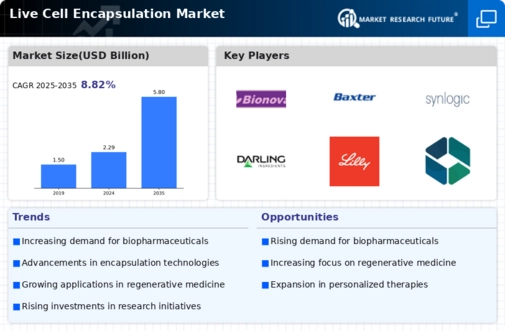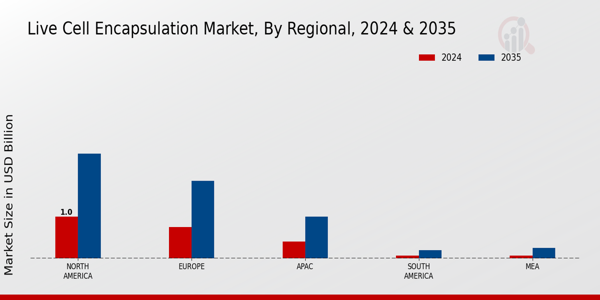Market Analysis
In-depth Analysis of Live Cell Encapsulation Market Industry Landscape
Due to advances in regenerative medicine, cell treatment, and capsule technologies to deliver medications to precise sites, the Live Cell capsule Market is growing rapidly. Restorative medicine advances affect markets. Safe shells immobilize living cells by encapsulation. It is crucial for developing cell-based therapies for numerous disorders. Live cell packaging is increasingly employed in cell therapy, boosting the industry. Encapsulated cells have unique activities and help tissues heal again, making them medications. This helps cure diabetes, neurological issues, and autoimmune diseases. Live cell packaging is increasingly used in drug delivery. The technique controls healing agent release. This allows medications to be given constantly and selectively to tissues and organs, boosting therapy efficacy and lowering adverse effects. Progress in biocompatible material and structural development is transforming the market. Researchers and producers are exploring living cell-compatible packaging materials to safeguard and exchange nutrients. Emerging technologies boost market development. Encapsulation technologies like microencapsulation and nanoencapsulation are improving. These procedures make confined cells more viable and helpful, increasing their medical potential. The host's defense system can't assault cells encased in living cells. Packaging may be altered to alter the immune response, making it ideal for cell-based therapies with a reduced rejection rate. Competition between firms and research organizations in the live cell packaging sector encourages collaboration and innovation. Strategic partnerships and cooperative research accelerate packaging and medical use development. Following regulators' regulations is crucial to market functioning. Live cell packaging methods are approved by regulatory agencies to ensure safety, efficacy, and quality. This impacts market launch and growth. The global market for live cell packaging is rising as more medical fields realize its benefits. Emerging economies investing more in research and healthcare are market growth opportunities. In customized medicine, live cell packaging is an intriguing idea. Cell-based medications perform better when packaged for each patient. Treatment strategies become increasingly focused and individualized. Despite promising results, encapsulated cells are still difficult to produce for therapeutic application. Bringing live cell packaging into medical practice requires overcoming growth, standards, and reproducibility issues. Live cell packaging has additional uses than cell therapy. It is being studied for application in tissue engineering, regenerative medicine, and bioartificial components to increase its use. Biotech companies are using live cell packaging technology more. More research and development is being done in encapsulating cell therapies for pharmaceutical companies. Due to research, new technologies, and growing acceptance of cell-based therapies, the Live Cell Encapsulation Market will thrive. Live cell encapsulation may improve regenerative medicine and individualized treatment approaches as the market develops, offering new ways to tackle tough medical issues.














Leave a Comment